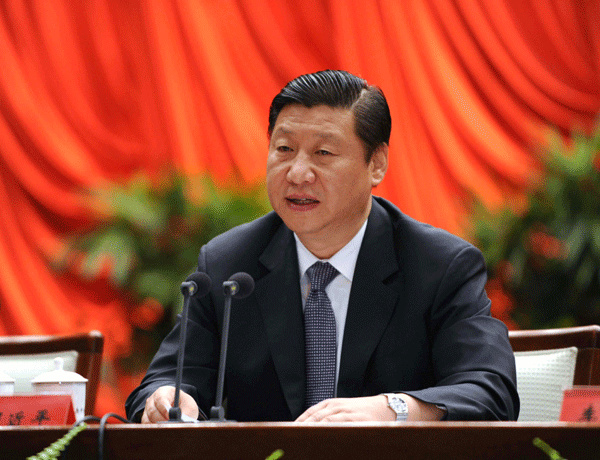
Xi’s European Tour: China’s Central-Eastern European Strategy Reaches for New Heights
Publication: China Brief Volume: 9 Issue: 20
By:

Chinese Vice-President Xi Jinping departed for Europe on October 7 for a two-week long official visit spanning from Brussels in the West to Bucharest in the East. The five European countries include Belgium, Germany, Bulgaria, Hungary and Romania. This high-level trip by the Chinese leader most likely to succeed President Hu Jintao in 2013 may signal momentum behind a change in the Chinese leadership’s attitude toward the Eastern European region, and mark the beginning of a new stage in their bilateral relations.
Vice-President Xi’s European tour has been framed by the Chinese Foreign Ministry and official-media as a visit to consolidate and develop cooperation in economic relations between China and the five countries (Xinhua News Agency, October 1). While Xi’s stopovers in Brussels and Berlin are no surprise given Western Europe’s important position in the Chinese economy, more telling of China’s evolving “go-out” investment strategy is Xi’s visit to the Central and Eastern European countries. Xi’s call to Hungary, Bulgaria and Romania against the recent backdrop of a massive $1 billion Chinese loan to neighboring Moldova in August—which some analysts say signal an intensification of Beijing’s strategy to diversify its estimated $2 trillion foreign reserves—may be an indication that the Chinese are eager to accelerate their diversification strategy through the emerging countries in the region, and is sure to raise expectations. The Moldovan loan has apparently been in the works for some time; the plan was initially announced at a Chisinau Beijing videoconference in February (Moldova.org, February 6). Chisinau could not accept the loan at the time because it signed a memorandum with the IMF valid until April that restricted it from taking out credits from China.
In the lead-up to Xi’s visit, which will include a raft of economic forums, the Chinese media has been touting Bulgaria, Hungary and Romania as important commercial partners for China in the Central and Eastern European region (Wen Wei Po [Hong Kong], October 6). Data released by the General Administration of Customs of the Chinese government indicates that commercial trade between China and the region has been developing rapidly in recent years. China’s total trade with the three countries was $1.4 billion in 2000 and increased to $12 billion in 2008, which represents an almost eight-fold increase. The share of total bilateral trade is divided by Bulgaria (~$1.3 billion), Hungary (~$7.5 billion), and Romania (~$3.2 billion), which ranks these countries 5th, 2nd, and 4th respectively in China’s overall trade in terms of countries in Central and Eastern Europe (Wen Wei Po, October 6).
According to Chinese government customs data, Belgium is China’s seventh largest commercial partner in the European Union (E.U.). In 2008, commercial trade between China and Belgium was $20.2 billion, which represents a 14.4 percent increase over the previous year. Belgium is the ninth largest source of foreign investment to China from the E.U. By August 2009, Belgium had direct investments in China worth over $1 billion. From January–August 2009, Belgium’s real investment in China increased by 85.8 percent year-over-year (Wen Wei Po, October 6).
Currently, Germany is China’s largest commercial partner in Europe. In 2008, China-Germany commercial trade reached $115 billion and accounts for about a quarter of total China-Europe commercial trade. Germany’s investments in China reached $1.6 billion, which also accounts for about a quarter of total E.U. investments in China. Chinese enterprises invested $980 million in Germany, which accounts for 29 percent of China’s total investments in the E.U. (Wen Wei Po, October 6).





